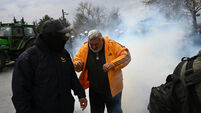Europe’s oldest mummies discovered
Four human skeletons dating back as far as 3,500 years were found buried at a sand quarry in South Uist, in the Outer Hebridean Western Isles.
The find by University of Sheffield researchers could dramatically alter our understanding of the way Bronze Age society treated its dead.














